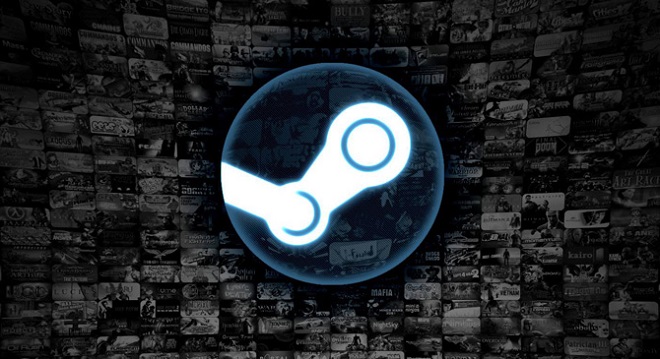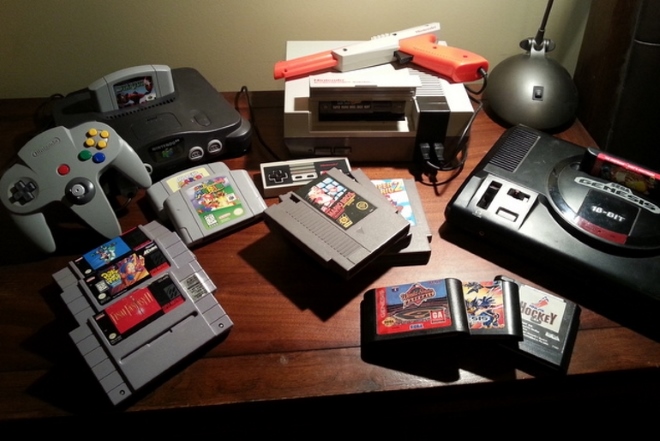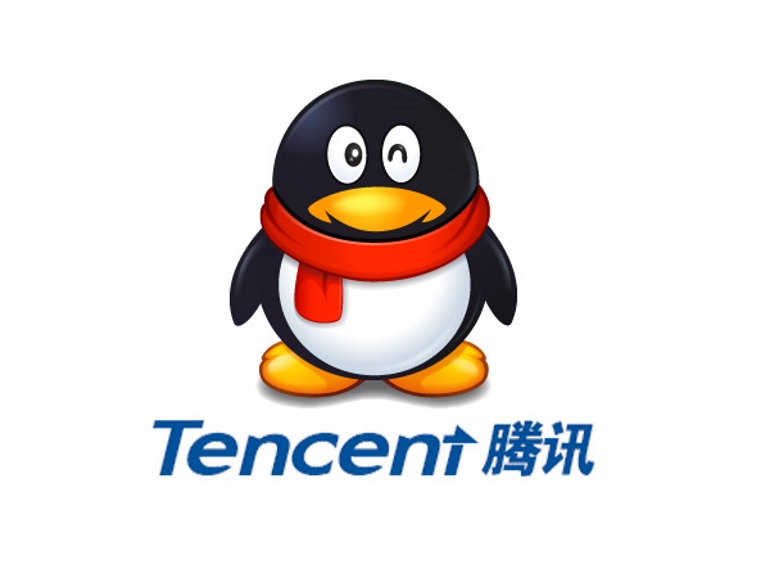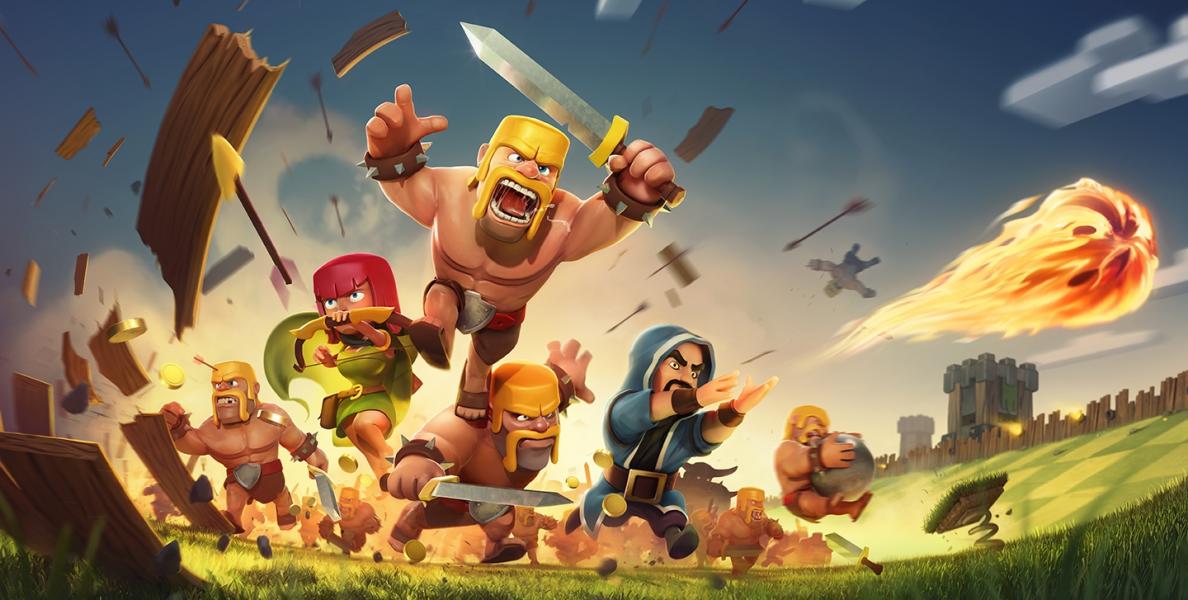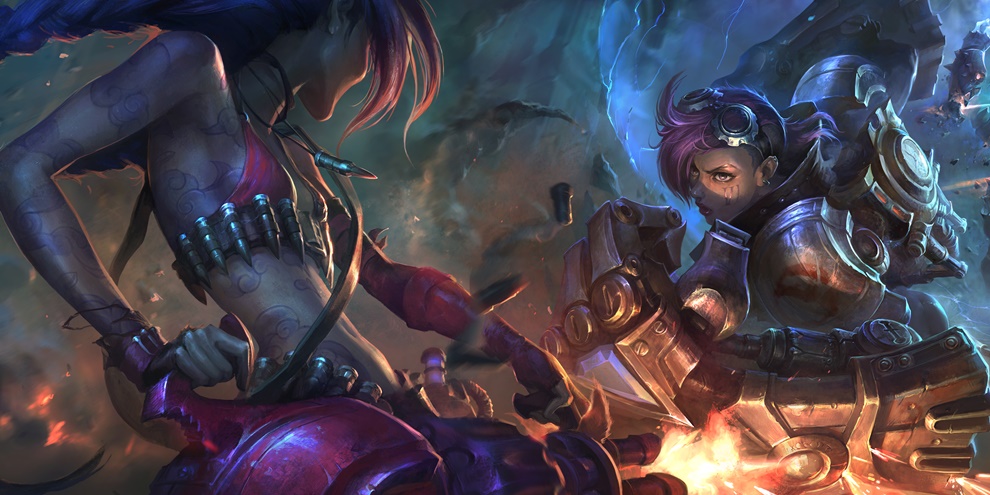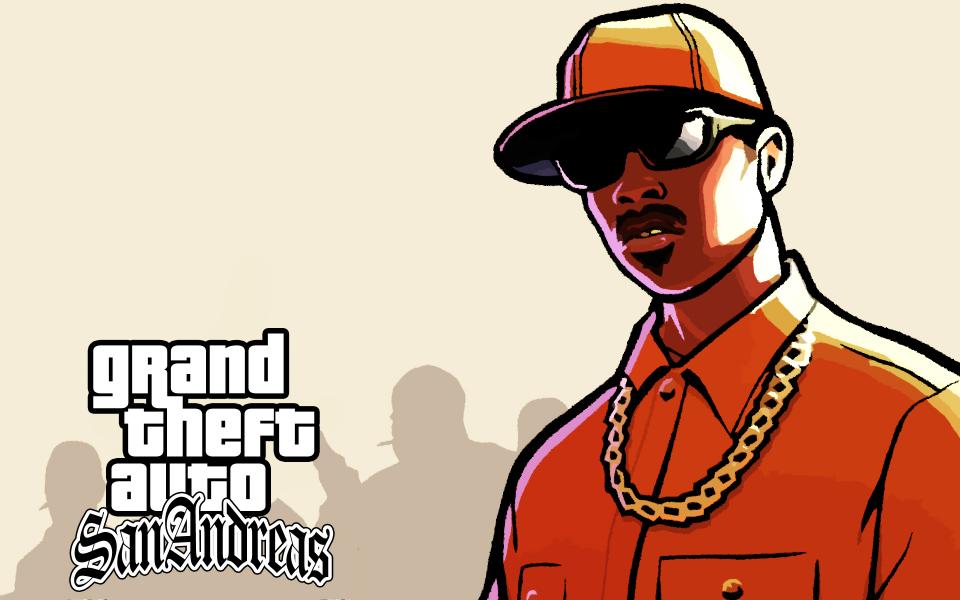
Get to Know the 5 Juiciest Controversies to Hit the Gaming Scene
1. The San Andreas “Hot Coffee” Mod
Back in the good ol’ days, before we had GTA V visually sweeping us off our feet, we had an older, less refined lover: San Andreas.
When Rockstar Games released Grand Theft Auto: San Andreas for the PC in 2004, it did so amidst a media uproar about violence in video games and the possibility that such violence might inspire its players to commit similar acts in real life—after the killing of 45-year-old Aaron Hamel and serious wounding of 19-year-old Kimberly Bede, their teenage murderers confessed that they had shot rifles at passing cars to mimic the behavior they had seen in Grand Theft Auto III.
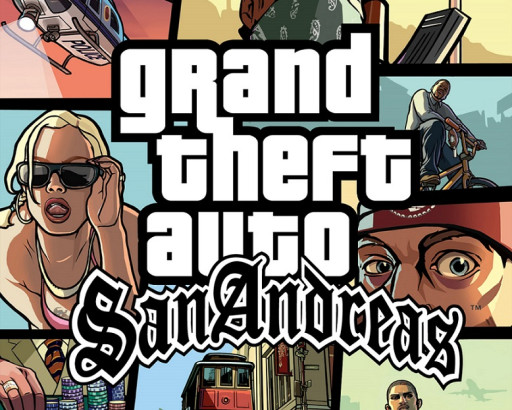
This definitely looks like the cover of a game parents should be buying for their kids. Definitely.
There were many vocal opponents of violence and sex in video games at the time, such as Hillary Clinton and Jack Thompson—a former attorney (now disbarred) and American activist who pinned certain violent crimes of the time on games such as Grand Theft Auto: Vice City, which he argued acted as “rehearsal” for real killings.
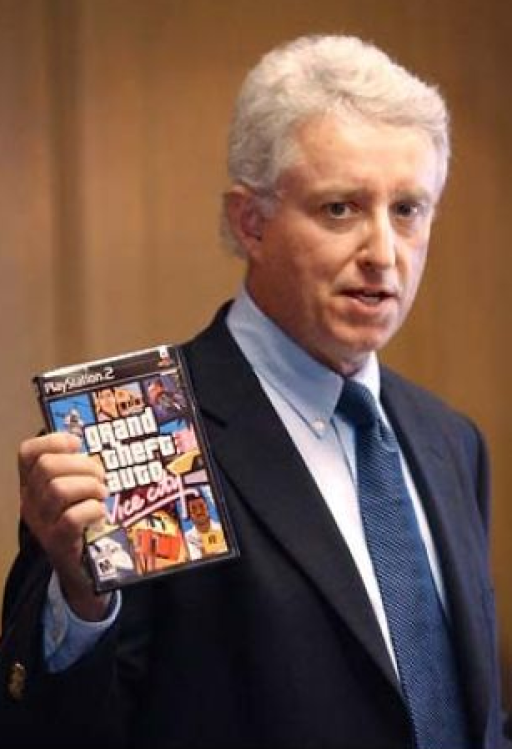
Pictured here: Jack Thompson holding a copy of Vice City, one of his favorite targets.
Regardless of where you stood or stand on the question of violent video games’ influence over players, there’s no denying that when San Andreas made its debut, the media and the world were primed for the scandal that followed.
Since RockStar released the game on PC first, modders do what modders do: make skins, invent items, and uncover hastily removed code covered up by the game’s developers. It wasn’t long before a modification was released that set the media firestorm ablaze: the “hot coffee” mod.
But What Was “Hot Coffee”?
The hot coffee mod allowed the player to participate in a mini-game from the typical third-person POV as CJ (San Andreas’ main character) gets, ahem, up close and personal with a female acquaintance. The fact that the scene is a mini-game once the mod is applied allows the player to participate with the controller. Without the mod installed, the scene is merely implied and takes place behind a closed door.
Once word got out about the mod, there were a lot of important people who weren’t pleased this game might be in the hands of children. Led by Dr. David Walsh, the National Institute on Media and the Family sent out a “National Parental Warning” to let unsuspecting mothers and fathers know their kids might be using those joysticks for more than just steering cars.
The game’s publisher Take-Two Interactive claimed that the modding community had invented the “hot coffee” scene themselves, but then the creator of the mod stepped forward to claim his work.
Dutch gamer and modder Patrick Wildenborg told the news media that his mod did not invent the hot coffee scenario in San Andreas; it merely made the mini-game accessible to the players.
When other curious coders uncovered the mini-game in the PS2 version of San Andreas as well, it was starting to become clear that maybe Take-Two hadn’t exactly told the truth. Dr. David Walsh pleaded in his National Parental Warning for Rockstar to “come clean” about the origins of the Hot Coffee mod and take action to inform the public. Senator Hillary Clinton even held a press conference to ask that Rockstar be investigated for possibly knowing about the pornographic content and still distributing the game.
The truth finally emerged when, under investigation by the ESRB, Rockstar admitted they had created the hot coffee mini-game and had not completely removed it from the game’s code before San Andreas’ release. After that, the ESRB slapped the game with an “adults only” rating, and over time, the furor died down.
It’s pretty well-accepted these days that Grand Theft Auto is a game that’s not for kids, but that doesn’t stop parents from unwisely purchasing the game for youngsters. San Andreas wasn’t the last the world has heard of Jack Thompson, either. Recently, he sketched a connection between the Washington Navy Yard Shooting and Grand Theft Auto V.
2. Maxis Sabotages SimCity 2013 in an Attempt to Stop Piracy
SimCity is a series with a beloved history. Released in 2013 by Maxis, SimCity 2013 was the first in the series to be released since the release of SimCity 4 ten years previous. Thousands of gamers queued up on midnight Eastern time ready to build and destroy cities like the finest of history’s maniacal emperors.
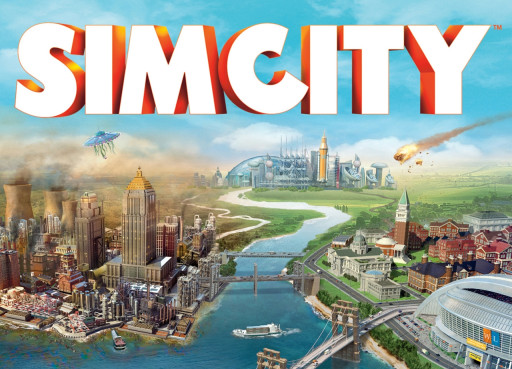
SimCity, a franchise with a beloved history, was slated to have its first new game in 2013—breaking a 10-year dry spell for the series.
But alas, their dreams would not come true. To be clear, those dreams would be stomped right into the curb, as it turned out that Maxis’ release of SimCity 2013 required players to be always connected to the internet in order for the game to work at all.
Now, requiring players to be always online might make sense in a multiplayer mode in which cities connect across the globe. But this requirement also extended to the single-player mode, which meant that even if you just wanted to build your city with some gosh darn peace and quiet, you were still going to face the problems that the always-online mode presented to all its players.
See, Maxis wanted to help cut down on piracy for their new title, and the always-online requirement was a well-intentioned but disastrous attempt to stop illegal downloads. SimCity sold over a million copies in a matter of weeks.

The logo for Maxis, the studio famous for creating the SimCity franchise.
Maybe it all would not have gone so poorly, if Maxis’ servers had not been absolutely overwhelmed by the number of players trying to log on in the first few days of SimCity’s launch. Players experienced game crashes, extremely long load times, disconnections, and error messages. For those lucky few who actually did get into the servers to try the game, they frequently found when they tried to save their progress that the game had failed to save. They would be forced to reload an earlier file and, if the game had wiped that as well, start from scratch.
EA itself decided not to issue refunds, which further infuriated consumers already frustrated by the game’s disappointing opening. People paid $60 for a game they couldn’t play if they didn’t have an internet connection and couldn’t play even if they did.
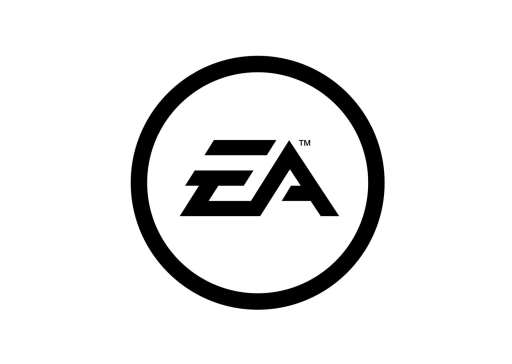
Electronic Arts is a publisher known for a sometimes-rocky history with gamers.
Other retailers were not so quick to anger their customers, though: Amazon removed both the digital and physical versions of the game from the store due to the massive influx of complaints.
Worse yet, modders uncovered that Maxis did not truly have to design the game to be always-online by creating mods that disabled the problem-causing feature. Plenty of people used mods to access single player mode without the always-online feature to bog down their game. It seemed Maxis only added the always-online mode to keep people from pirating SimCity—but they had hobbled their paying customers in doing so.
In all, it took Maxis almost a week to get the servers functional enough that people could play the game and maybe, oh, save it without losing everything. But not before fans banded together to post a petition on the official We the People website demanding that EA issue refunds for the game they had made so many promises on. And not before EA suspended multiple advertising campaigns for the game.
How did Maxis finally get the servers up and running and soothe the ruffled feathers of their dwindling flocks of fans? Only by disabling some, they said, “non-critical gameplay features (leaderboards, achievements and region filters). Disabling these features will in no way affect your core gameplay experience.”
Before moving on to scandal number two, a philosophical question to consider: if a studio immobilizes its own game in an attempt to stop piracy, does that mean the pirates won?
3. South Korean Pro Players Get Caught Match-Fixing in StarCraft—Twice
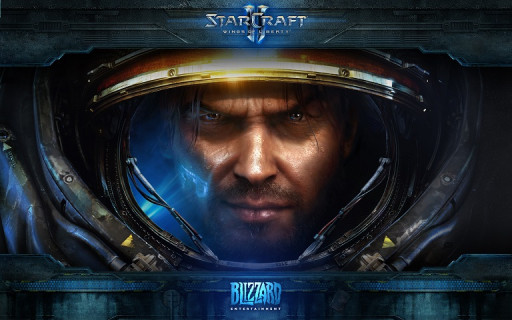
A match-fixing scandal in StarCraft II shocked fans in 2015, who were disappointed at the same controversy occurring in South Korean competitive StarCraft in 2010.
South Korea and StarCraft have a history in competitive eSports. South Korea also has a history of match-fixing in StarCraft.
In 2010, 11 professional StarCraft players were indicted for having fixed and bet on matches in which they participated. Investigations found that high stakes betting websites had approached the players and offered financial incentives for the players to throw their own games.
StarCraft II remained free of the match-fixing taint until as recently as 2015, when professional players YoDa, BBoongBBoong, and Gerrard were all investigated and found guilty of match fixing.
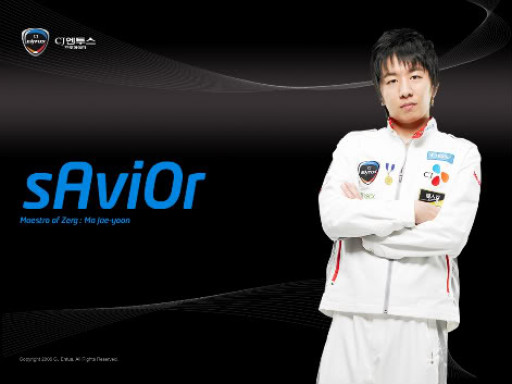
sAviOr was a top player in the South Korean StarCraft scene until he was busted for match-fixing in 2010
The process of fixing the matches can vary. Sometimes the players will deliberately throw a game. Others, players would go over or under a time limit in order to reap the monetary rewards. Reports released from the time do not specify which matches were fixed, but we do know that there were five fixed matches total.
To understand how deeply betrayed fans felt when this scandal was uncovered requires some context about the South Korean StarCraft scene. First, eSports in South Korea is bigger and has been around longer than in the United States, and its popularity attracts the kind of attention that might make betting on matches profitable. The highest payout for a single of the fixed bets was 1 million won—that’s $87,000 USD.
Second, players arrested were much-beloved by the StarCraft community, including champion player Life, who was 19 at the time of being caught match-fixing. He was a 10-time tournament winner, scoring his first victory at the age of 15. Life had recently unseated an older area champ, and he looked to have a promising future with many endorsements ahead of him.
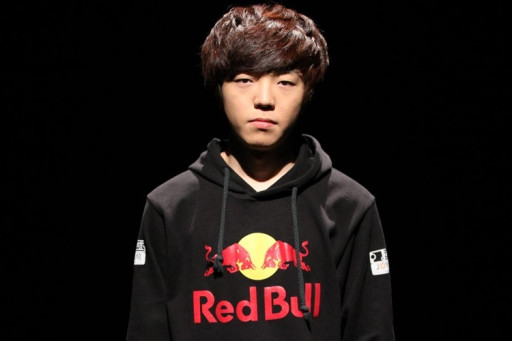
Lee "Life" Seung Hyun was one of eleven players taken into police custody under suspicion of fixing matches in the StarCraft II eSports scene.
And it wasn’t the first time a particularly beloved player had betrayed StarCraft fans either, which added to fans’ disappointment. When that first ring was uncovered in 2010, Ma “sAviOr” Jae Yoon was found guilty of helping to run the match-fixing-and-betting scheme. The Korean eSports Player’s Association (sometimes referred to as KeSPA) placed sAviOr first in their ratings a total of nine times before he was uncovered for match fixing, and that’s only the first on a long list of achievements sAviOr lost when he was arrested.
It must be noted that, much like in the United States scene, many of the stars of the StarCraft eSports scene in South Korea are young (BBoong BBoong is an onomatopoeia for a fart sound in Korean), high school age, essentially still kids—setting them up for potential manipulation by unscrupulous persons who can convince them to get on board because hey, everyone else is doing it.
Fans were even further shocked by the fact that a team’s current coach worked with his own players to fix matches. Though match-fixing wasn’t new to the StarCraft scene, coaches working with players to fix matches felt like an all-time low to hordes of disappointed fans.
eSports Has a History of Match-Fixing
Add to all this the history that eSports in general has with match-fixing, and the pro StarCraft players throwing matches seemed to many fans to have continued to uphold a very disappointing precedent.
Remember, though, it may all look like fun and games, but these lawbreakers faced the consequences for their actions. Life got two years in prison and was banned from the StarCraft eSports scene for, well, life. sAviOr had it almost as bad with 18 months and a similar ban. All their wins and records set—of which there were many—have been wiped from the books.
Remember, kids, don’t do the crime if you can’t do the time.
4. No Man’s Sky Can’t Catch Up to Its Own Hype Train
The No Man’s Sky gameplay trailer, which was debuted at E3 2014 to uproarious applause.
This controversy is the most recent on the list, so fresh that the scandal is still ongoing. The studio responsible for No Man’s Sky, Hello Games, is being investigated by the Advertising Standards Authority in the UK for false advertising.
There has been a lot of talk of the ingratitude of the gaming community since the release of No Man’s Sky. The game’s trailer debuted in E3 2014 to a tidal wave of interest. The trailer featured a player character exploring procedurally generated worlds throughout a vast universe of solar systems.
An Infinite Universe to Explore or Conquer at Your Liesure
The sweeping views, space battles, and fantastical creatures only further fanned the flames of interest. The game would feature “18 quintillion” planets, and the procedural generation of the universe would ensure that no two planets were ever quite the same.
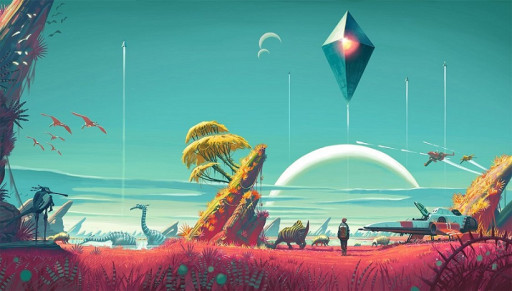
Some official art from No Man's Sky.
Hello Games released information about No Man’s Sky that made lofty promises—some true but many not.
Over the course of months before the game’s release, Sean Murray—the founder of Hello Games—made what some feel were misleading claims about the contents of No Man’s Sky. So many of these comments were made, in fact, that some frustrated fans created compilation videos to document what they saw as lies or half-truths on Murray’s part:
There are some incredibly comprehensive lists out there for those who want a side-by-side comparison, quotes, and more sources than you can shake a stick at. This list, posted and compiled by Redditors as a joint effort, even has tables. Now that is some dedication.
A highlight reel, for those of us with less time:
- Sean explains that unlike other games with planets, No Man’s Sky will not have a “sky box” that gives the illusion of the planet having rotation. Instead, NMS will have real planet rotation, and players supposedly would be able to “walk all the way around [the [planet], arriving back exactly where you started.”
Most games with planets form the illusion of rotation, the planet’s cycle through day and night, by switching the planet between different “boxes.” Upon release, No Man’s Sky is discovered to use the same sky box method. In fact, solar systems remain motionless, as do moons.
- Claims were made of ringed planets, but no ringed planets appeared in the game.
- Players were supposed to be able to name their ships, but that feature does not exist. In fact, a whole range of claims about ship flexibility and variety simply did not come true, leaving many players feeling an essential element was missing from the game.
- Many reported animal characteristics did not appear, such as animals being aware of and affecting their environments, and their animations were often buggy.
- Players were led to believe that alien life throughout the game would play an important role in the experience, changing the gameplay depending on how players chose to interact with species they encountered. This, too, did not have nearly the depth portrayed in the months leading up to the game’s release.
And much, much more.

Players were excited to be able explore procedurally generated worlds like the one above, promised the ability to either destroy or peacefully explore.
Some would say the delayed release date and the lack of review copies for No Man’s Sky were signs of things to come before the game even launched.
For perspective, many others have not been nearly as harsh in their assessment of the game. A decent number of players report enjoying their experience and sinking many hours into the game despite it not delivering on certain claims.
What appears to have generated the scandal here is not that No Man’s Sky is a bad game, per se, but perhaps an out-of-control anticipation train speeding down the tracks. We might never know exactly why the NMS release occurred the way it did, but surely many players will be watching as the situation in the UK with Hello Games unfolds.
5. Kojima vs. Konami
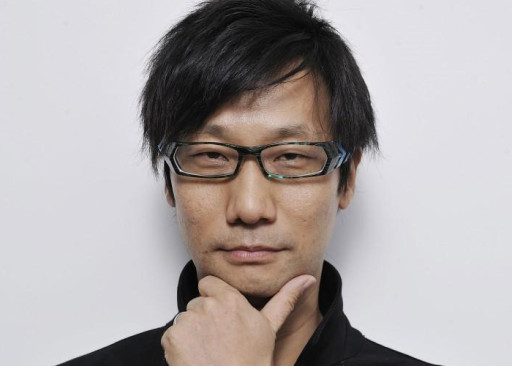
Hideo Kojima, the director and designer behind the Metal Gear Solid and Silent Hill series.
The biggest scandals are the ones with the longest histories, and so it goes with the 30 years of partnership between game designer Hideo Kojima and Konami Holdings Corporation, a Japanese entertainment company Kojima made games for.
Many people know Hideo Kojima for the beloved Metal Gear series. If you’re unfamiliar with it, know that it’s how Kojima got his start back in 1987 with the first installment: Metal Gear Solid. Perhaps you, like me, are fond of his later series Silent Hill, which spawned the iconic machete-toting, gore-splattered Pyramid Head.
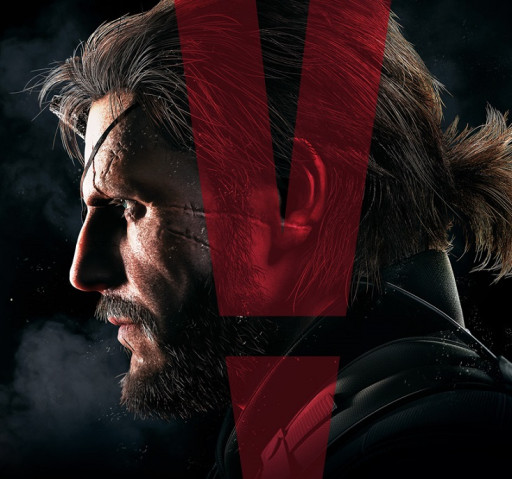
The Phantom Pain is the much-anticipated fifth installment in the Metal Gear Solid main series.
In the baby days of video games, Kojima directed and designed the game at a division of Konami dedicated to the MSX home computer. For almost as long as Kojima’s name has been ringing in players’ ears, he’s been in close quarters with Konami. That is until recently.
The brewing situation with Konami and Kojima first snagged people’s attention in March of this year, when Konami removed Hideo Kojima's name and the Kojima Productions logo from their website and marketing. Concern was heightened when the studio changed its name from Kojima Productions to Konami Digital Entertainment.

Konami's well-known logo.
These were just the first audible rumblings of a scandal that had been vibrating beneath the surface between Kojima and Konami, though.
After Kojima’s name was removed from Konami’s website, Konami’s next steps called the future of one of Konami’s other projects into question.
The playable trailer for Silent Hills—a continuation of Kojima’s spooky series to be once again taken up by Kojima himself and featuring The Walking Dead sweetheart Norman Reedus—was removed from the Playstation Store. Shortly after, Kojima’s partner in designing Silent Hills, Guillermo del Toro, confirmed that the project had been tanked.
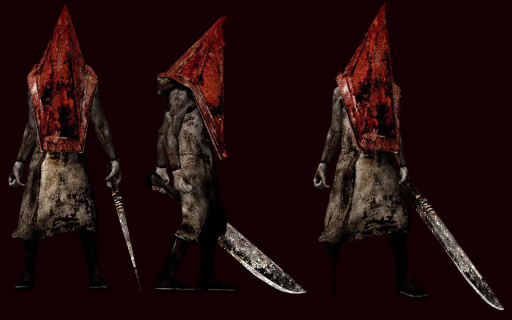
The monster Pyramid Head originated in Kojima's Silent Hill 2.
But the Real Shocker Was Yet to Come
The real shocker of this already fairly shocking feud happened at the Game Awards 2015 after the release of Kojima’s final project under Konami—Metal Gear Solid V: The Phantom Pain. See, the Kojima’s much-anticipated creation won some Best Score and Best Action/Adventure Game awards, but Kojima was not in attendance to accept the accolades.
Kojima’s reps didn’t beat around the bush, either, informing the press that Konami had forbidden Kojima from attending the award ceremony.
But how did all this bad blood well up between a studio and an artist with a 30-year partnership?
A couple of factors combined to undermine what seemed to be a solid relationship. For one thing, mobile gaming’s popularity in Japan has shot up wildly in recent years. It—not console or PC gaming—has become the most profitable gaming market in Japan. Konami’s desire to pursue this more profitable avenue of gaming leaves not as much room for Kojima Productions.
The other thing: Kojima Products is an expensive department for Konami to run, with a large staff for Konami to sustain. In the middle of last year, the President of Konami changed, and relations between the new management and Kojima started to fray as production costs for Phantom Pain and Silent Hills climbed ever higher.
How to deal with the branch spending money faster than Konami can make it? Cut it.
The good news is that all this hubbub obviously hasn’t slowed down Kojima. The trailer for his new game with his best bud Norman Reedus showed up this year at E3. It’s not Silent Hills, but it’s still a game that features ol’ Norm. This time, though, he’s in the buff. Scandalous.
You May Also Be Interested In:
10 Things We Love Most About the Metal Gear Games
Grand Theft Auto 5: 10 Interesting Facts About This Awesome Game
World of Warcraft and StarCraft Senior Members Leave Blizzard


